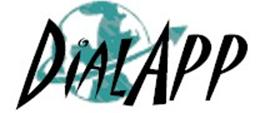I thought it would be fun to take a trip down memory lane, and give a short pictorial history of myStaffingPro applicant tracking system.
1999
Our first product as a company was DialApp, an interactive voice response system that companies could use to automatically collect job applications over the phone.

2000
Within a year, we built a web portal for reporting the applicant data collected over DialApp. We called the web site DialApp.com. I can still clearly picture the brainstorming meeting we had to choose the web application name. I don’t think that name lasted a year!


2001
Here we are in 2001 with our expanded application – this is our Build a List of Applicants feature. Notice we’re searching for a new name already. Kind of looks like fashion from the past, doesn’t it. But hey, we were proud of it at the time, and the functionality was robust.

2002
New logo – new name!

2003
In 2003 we streamlined the look of Build a List of Applicants a bit, added some shading, made it less crazy. We’ve still got the Quick Tools. Of course, there’s a lot more functionality not pictured here. We added a Requisition module, Sourcing module, and enhanced Reporting module.


2004
In 2004 we released our Fast Track Edition, a SaaS applicant tracking system that could be implemented by the customer with no technical support needed. Previously, implementations required support from our client services and technical departments.

2006
Fast forward to 2006 – the same Build a List of Applicants feature is displayed. The design is better, but we haven’t gotten rid of that awful teal color yet.

2007
We’ve replaced teal with blue – hooray! Build a List of Applicants:

Plus, a new logo:

Today
And now, we have a SaaS applicant tracking system with 10 years of feature rich development that offers over 75 add-on modules.
Build a List of Applicants:



